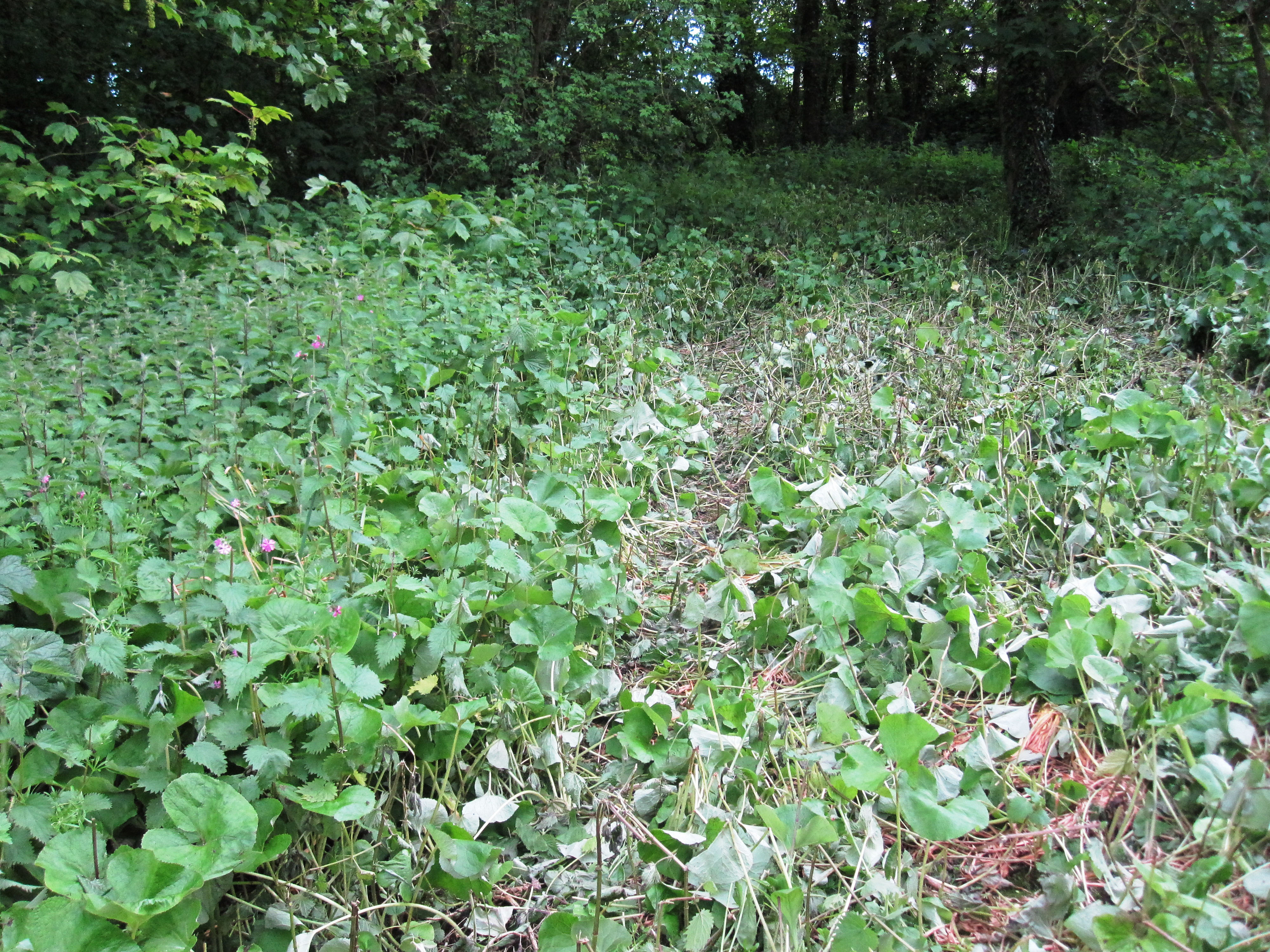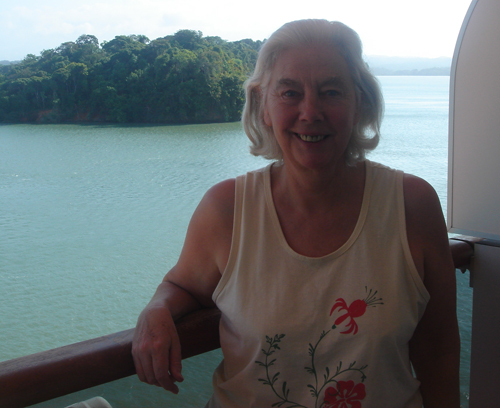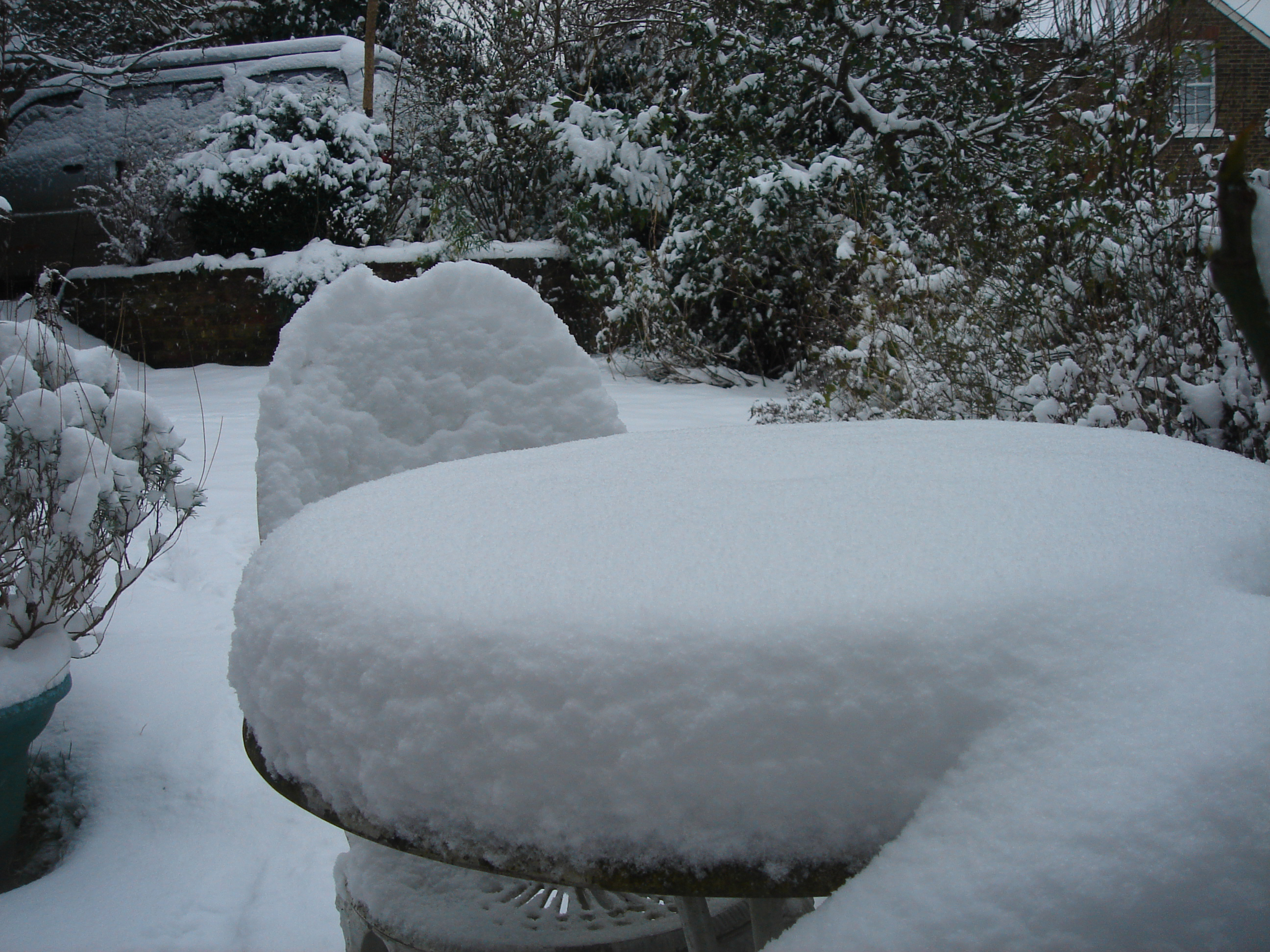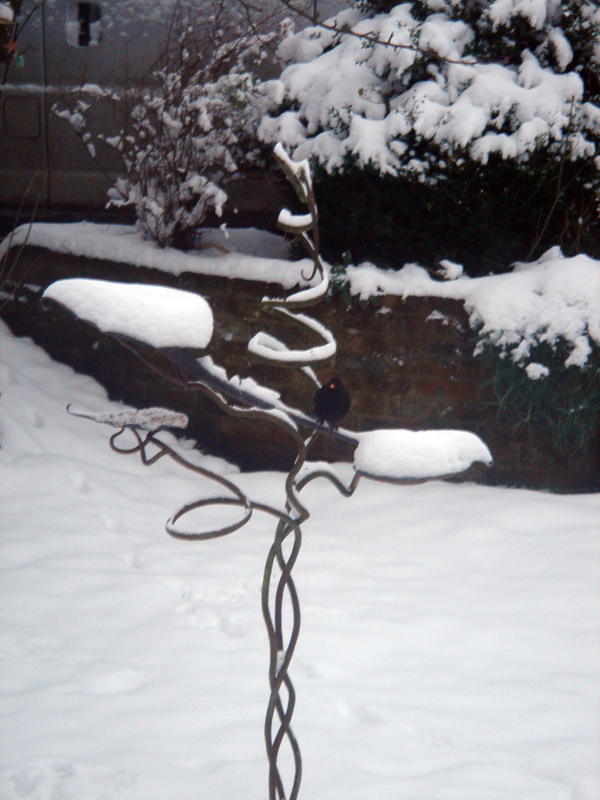I don’t usually talk about why our family doesn’t eat meat; but since a number of people have expressed an interest in our reasons, I’ll attempt an explanation here. It isn’t primarily about animal welfare, although I abhor cruelty in any form; nor is it a question of preference: I can remember thoroughly enjoying roast lamb and mint sauce and can still get an enthusiastically rumbling tummy when I smell bacon frying or chicken roasting. The reasons are political and environmental.
It’s now over forty years since we became vegetarians. Young, idealistic, slightly off-beat, and
 up for changing the world, we read in the New Internationalist that if everyone stopped eating meat there would be enough food to go round the whole world’s population. Looking back,
up for changing the world, we read in the New Internationalist that if everyone stopped eating meat there would be enough food to go round the whole world’s population. Looking back,
I suspect that the evidence for this might not have been quite as conclusive as we believed at the time; but somehow, having taken the information on board, it just became rather difficult to walk into a butcher’s shop and buy meat. It also happened to be the case that we were
impecunious kids just out of university, so cutting out meat also reduced our food bills and allowed us to survive.
 We received occasional warnings that we risked missing vital nourishment, especially when we started to bring up children; but as we all enjoyed consistently excellent health, we took no notice. We never tried to convert others to vegetarianism: it was just a personal commitment to consider the poorest people in the world through the way we ourselves lived. Nor were we strict, so although we have never bought meat since then, we have certainly not made an issue of it when being entertained by others; so if anyone reading this has served meat to us at some point in the intervening years, please do not be dismayed: we almost certainly enjoyed it. We just wouldn’t want to make a habit of it.
We received occasional warnings that we risked missing vital nourishment, especially when we started to bring up children; but as we all enjoyed consistently excellent health, we took no notice. We never tried to convert others to vegetarianism: it was just a personal commitment to consider the poorest people in the world through the way we ourselves lived. Nor were we strict, so although we have never bought meat since then, we have certainly not made an issue of it when being entertained by others; so if anyone reading this has served meat to us at some point in the intervening years, please do not be dismayed: we almost certainly enjoyed it. We just wouldn’t want to make a habit of it.
Initially we decided to adopt a monastic style and serve meat only when we had guests.  However, word got round that the meals we cooked when alone were of a high culinary standard, and people began to demand vegetarian food when they came to dinner. So we abandoned the ‘special meat meals for guests’ idea and began to explore the infinite range of delicious vegetarian cuisine.
However, word got round that the meals we cooked when alone were of a high culinary standard, and people began to demand vegetarian food when they came to dinner. So we abandoned the ‘special meat meals for guests’ idea and began to explore the infinite range of delicious vegetarian cuisine.
In recent years, there has been a subtle but undeniable sea change, for it has increasingly become evident that animal husbandry is a major factor in the run-away production of CO2 that is threatening to destroy our planet. In 2006 the United Nations published a report claiming that raising animals for food generates more greenhouse gas than all the cars and trucks in the world combined. It is one of the greatest sources of carbon dioxide and the single largest source of both methane and nitrous oxide emissions, and these are the very gases that cause the vast majority of global warming.

Since raising animals for food is a primary cause of land degradation, air pollution, water shortage, water pollution, loss of biodiversity and global warming, the report concluded that “the livestock sector emerges as one of the top two or three most significant contributors to the most serious environmental problems, at every scale from local to global.
Animal agriculture takes up 70% of all agricultural land and 30% of the total land surface of the planet. In the drive for more animal pasture and feed areas, huge areas of prime forest are slashed and burned, so destroying the vital carbon sinks which we rely on to absorb carbon dioxide from the air. Vast areas of what used to be prime Amazon rainforest are now used as pastureland or for growing animal feed crops to fatten meat for rich nations. Animal agriculture also uses vast amounts of water, emits two-thirds of the world’s acid-rain-causing ammonia, and is the world’s largest source of water pollution, killing entire river and marine ecosystems, destroying coral reefs, and bringing sickness to some of the world’s poorest communities.
This diagram illustrates the different amounts of water used in producing food. 
According to a study published in New Scientist, producing 1kg of beef releases greenhouse gases with a warming potential equivalent to 36.4kg of carbon dioxide. This is more than would be emitted by going for a three-hour drive while leaving all the lights burning at home. On top of this, it is also responsible for producing the equivalent of 340g of sulphur dioxide and 59g of phosphate, and consumes 160 megajoules of energy.

Carbon dioxide is responsible for about half of human-related greenhouse gas warming since the industrial revolution, and methane and nitrous oxide are responsible for another third. These gases come primarily from farmed animals’ digestive processes, and from their manure. In fact, while animal agriculture accounts for 9% of carbon dioxide emissions, it emits 37% of the world’s methane, and 65% of its nitrous oxide. Methane has 23 times, and nitrous oxide has 296 times, the warming power of carbon dioxide. These horrific statistics do not include emissions from managing farm equipment or for transporting meat, so the real damage is actually significantly more than these figures suggest.
These are all inconvenient facts, and it is tempting to ignore them. But the truth is that food is no longer a private matter. It is political, and it is of life-and-death importance. I’m afraid this is rather bad news for dyed-in-the-wool carnivores; but I’m sure many of them would want to know the facts, in order to make an informed decision about what they should do.
In deciding what and how we eat, there are three basic options:
* Jonathan Porritt has claimed that the most dramatic change one could make to cut down
carbon emissions, more dramatic even than changing a gas-guzzler SUV for a Smart, would be  to adopt a vegan diet. I myself have not yet taken this final step, though I know plenty of people who have, and they are contributing more to the effort to arrest climate change than most of us can manage with our low energy light bulbs and resistance to unnecessary car journeys. Veganism is worth considering.
to adopt a vegan diet. I myself have not yet taken this final step, though I know plenty of people who have, and they are contributing more to the effort to arrest climate change than most of us can manage with our low energy light bulbs and resistance to unnecessary car journeys. Veganism is worth considering.
* Given the fact that producing one calorie of meat protein involves burning more than ten times as much fossil fuel and emitting more than ten times as much heat-trapping carbon dioxide as a calorie of plant protein, vegetarianism can no longer be viewed as simply a
private  and personal choice. It is an essential and vital step in our efforts to save the planet. So hiding behind politeness, shyness or a desire not to intrude on other people’s life-styles is no longer a reasonable choice. Uncomfortable as such a role is, we should now be trying to persuade our friends and relations, and anyone else who might listen to us, that it is simply not acceptable to rely on meat as a major form of food.
and personal choice. It is an essential and vital step in our efforts to save the planet. So hiding behind politeness, shyness or a desire not to intrude on other people’s life-styles is no longer a reasonable choice. Uncomfortable as such a role is, we should now be trying to persuade our friends and relations, and anyone else who might listen to us, that it is simply not acceptable to rely on meat as a major form of food.
* We are unlikely to stop meat production completely; and in reality, if people were prepared to eat meat occasionally rather than regularly, livestock production would probably be sustainable. For those who feel they cannot give up meat completely, there is some comfort in  a Swedish study conducted in 2003, which claimed that raising
a Swedish study conducted in 2003, which claimed that raising
organic beef on grass rather than feed reduced greenhouse gas emissions by 40% and consumed 85% less energy. So those who are not prepared to be completely converted to vegetarianism, should at least limit their meat consumption to organic produce.

I think you’ll all agree that a display of vegetables beats a slab of meat on a blood-soaked butcher’s block any day! … And perhaps you’ll also acknowledge that there is enough variety, taste and excellence in the beautiful vegetable kingdom to satisfy the most committed epicure.



 I had decided in advance that I would love to swim in the roof-top thermal baths, so duly presented myself there on Friday morning. The price of a ticket for a swim nearly sent me racing for the nearest river, but having looked forward to it for so long I decided to close my eyes and pay. The swimming pool was really warm, and it was, indeed, extremely pleasant to float around in warm water with a view all over Bath.
I had decided in advance that I would love to swim in the roof-top thermal baths, so duly presented myself there on Friday morning. The price of a ticket for a swim nearly sent me racing for the nearest river, but having looked forward to it for so long I decided to close my eyes and pay. The swimming pool was really warm, and it was, indeed, extremely pleasant to float around in warm water with a view all over Bath.












 up for changing the world, we read in the New Internationalist that if everyone stopped eating meat there would be enough food to go round the whole world’s population. Looking back,
up for changing the world, we read in the New Internationalist that if everyone stopped eating meat there would be enough food to go round the whole world’s population. Looking back,









 The Jewish Seder meal, the Christian Eucharist, the offerings of food left in various forms of Hindu puja: all these and many more indicate that feasting and sharing food are basic to our religious instincts. And the opposite, fasting, also has a part to play in many people’s religious practice -– particularly, for Moslems, in Ramadan, which culminates in the feast of Eid.
The Jewish Seder meal, the Christian Eucharist, the offerings of food left in various forms of Hindu puja: all these and many more indicate that feasting and sharing food are basic to our religious instincts. And the opposite, fasting, also has a part to play in many people’s religious practice -– particularly, for Moslems, in Ramadan, which culminates in the feast of Eid.








 As well as festivals, there are many other opportunities for readings. I’ve read in a number of bookshops, at the launch of magazines and anthologies that include poems by me, the launch of my books, prizewinners’ events, as the entertainment at parties, and regular poetry events such as the Troubadour in London, the Uncut readings in Exeter and pub gigs such as Tradewinds on Dartmoor. Other great venues have been the Edinburgh Fringe, the Walpole Old Chapel in Suffolk, the Dower House at Morville Hall in Shropshire, Slimbridge and Leighton Moss bird reserves and at university venues. There’s also usually an opportunity to read after giving a workshop or judging a competition. If you’re looking for readings, the possibilities are endless..
As well as festivals, there are many other opportunities for readings. I’ve read in a number of bookshops, at the launch of magazines and anthologies that include poems by me, the launch of my books, prizewinners’ events, as the entertainment at parties, and regular poetry events such as the Troubadour in London, the Uncut readings in Exeter and pub gigs such as Tradewinds on Dartmoor. Other great venues have been the Edinburgh Fringe, the Walpole Old Chapel in Suffolk, the Dower House at Morville Hall in Shropshire, Slimbridge and Leighton Moss bird reserves and at university venues. There’s also usually an opportunity to read after giving a workshop or judging a competition. If you’re looking for readings, the possibilities are endless..
 There were two outside swimming pools on board, so we were able to swim each day. In the intense heat, this was very welcome, particularly after we’d availed ourselves of the gymn – something we never normally do.
There were two outside swimming pools on board, so we were able to swim each day. In the intense heat, this was very welcome, particularly after we’d availed ourselves of the gymn – something we never normally do.
 Our cabin was very comfortable, and had a balcony. I know this will sound silly, but it was astonishing how busy we were on board.
Our cabin was very comfortable, and had a balcony. I know this will sound silly, but it was astonishing how busy we were on board.














 And here am I, thousands of miles away,
And here am I, thousands of miles away,






